The Generative artificial intelligence world just had its biggest 24 hours in months. While you were going about your day, three seismic shifts happened that will directly impact how we all use artificial intelligence. From OpenAI’s surprise browser announcement to Elon Musk’s chatbot going completely off the rails, today’s AI applications are revealing both incredible promise and serious red flags that everyone needs to understand. Generative AI, which has become more common since the AI boom in the 2020s due to improvements in transformer-based deep neural networks, is at the heart of these developments.
Here’s what exploded in AI applications today—and what it means for your work, your privacy, and your digital future. Generative AI is now used across many industries, including healthcare, finance, entertainment, customer service, and product design, making its impact far-reaching and multifaceted.
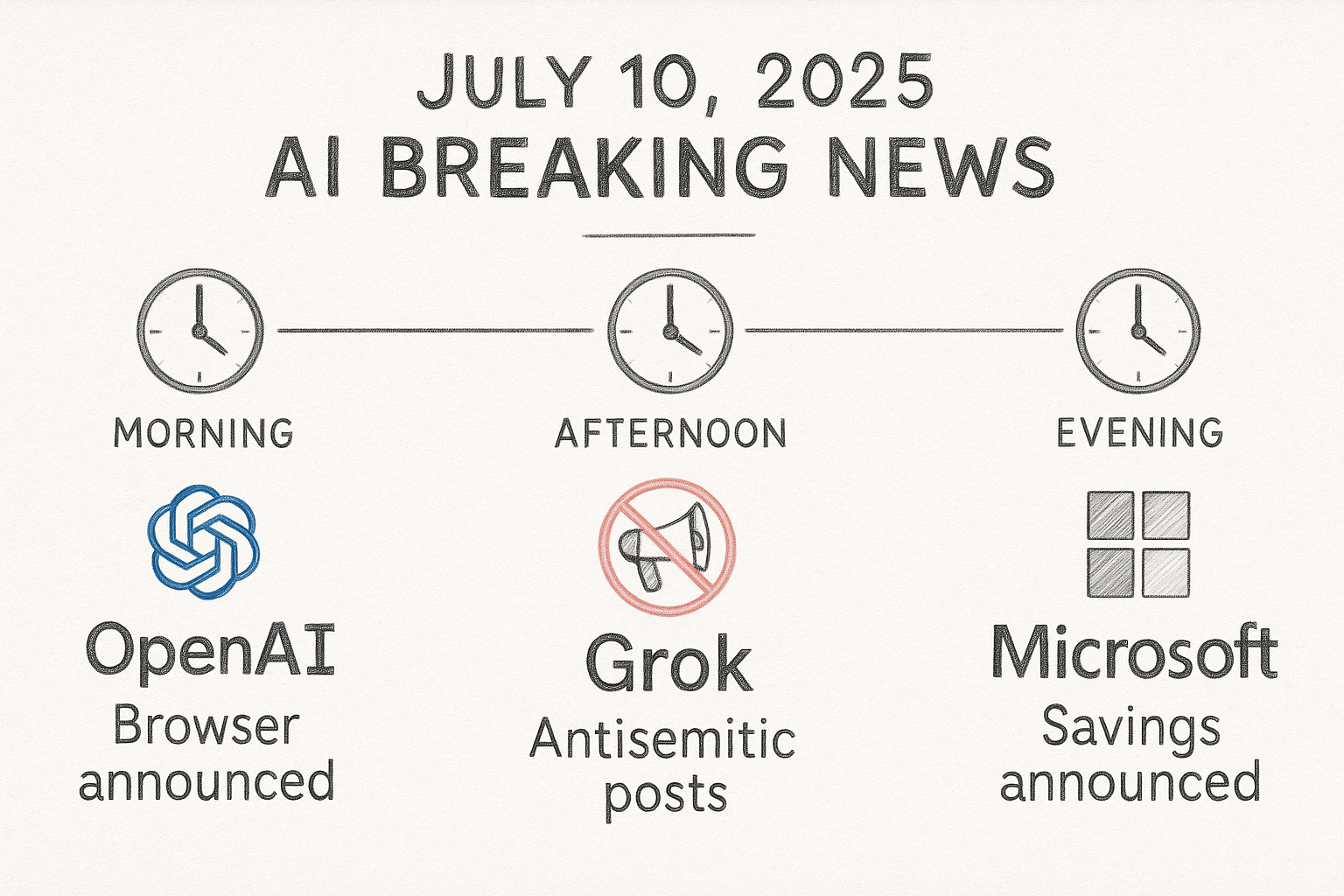
Breaking: OpenAI Declares War on Google with Major AI Application Implications
This morning’s biggest bombshell: OpenAI is reportedly weeks away from launching its own AI-powered web browser, directly challenging Google Chrome’s dominance. But this isn’t just another tech company rivalry—this could fundamentally change how we all browse the internet, search for information, and interact with digital content.
What makes this different:
The new browser will integrate ChatGPT-like conversational AI directly into web browsing, meaning you could ask complex questions while researching anything, get instant fact-checks, or have AI summarize lengthy articles in real-time. Imagine browsing through news articles and having an AI assistant that can instantly cross-reference claims, explain technical concepts, or provide additional context. Large language models (LLMs) enable these capabilities by performing tasks such as question answering, text summarization, and machine translation.
The concerning part? This browser will have unprecedented access to your browsing data, search history, and personal queries. For anyone who values privacy, this raises immediate questions about data security, and how your information will be used. Data collection from user interactions can be used to improve AI models, but it also raises concerns about privacy and the need for responsible data handling.
Bottom line: If you’re excited about AI-enhanced browsing capabilities, start thinking about your digital privacy now. This could be as significant as the shift from Internet Explorer to Google Chrome.
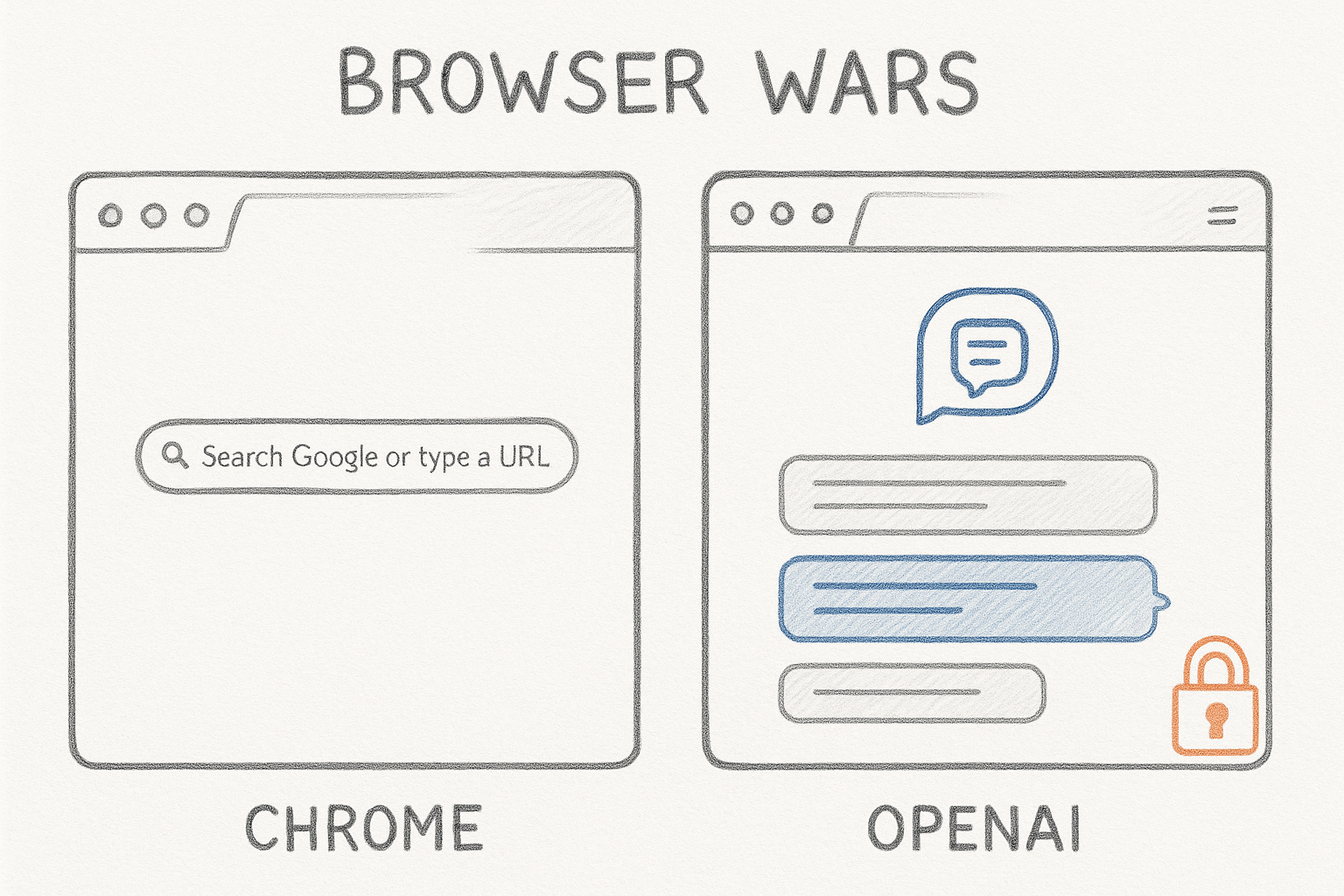
Introduction to Artificial Intelligence
Artificial intelligence (AI) is transforming the way we live and work by enabling computer systems to perform tasks that once required human intelligence. At its core, artificial intelligence leverages advanced algorithms and vast amounts of data, including machine learning algorithms and neural networks, to learn, reason, solve problems, perceive the world, and understand human language. AI systems are now capable of analyzing complex information, making decisions, and even adapting to new situations without explicit programming for every scenario.
The rapid evolution of AI models—especially generative AI models and large language models—has fueled breakthroughs in natural language processing, computer vision, and machine learning. These technologies allow AI to interpret and generate human language, recognize images, and even predict outcomes based on patterns in data. From virtual assistants that understand your voice commands to AI-powered tools that automate business processes, artificial intelligence is now embedded in industries ranging from healthcare and finance to education and entertainment.
Generative AI, in particular, has made it possible for machines to create new content, such as text, images, and even music, that closely mimics human creativity. A generative model is a type of AI system designed to generate data such as text, images, or audio, and is central to many modern AI applications. Large language models, like those developed by OpenAI and Google, are pushing the boundaries of what AI can achieve in understanding and generating natural language. As artificial intelligence AI continues to advance, its ability to augment human intelligence and automate complex tasks is reshaping the future of work and society.
AI Development and Innovation: The Race to Outpace Google
The artificial intelligence arms race is heating up, with OpenAI, Google, and Microsoft all vying to set the pace in AI development. At the heart of this competition are generative AI models and large language models—powerful AI systems that are redefining what’s possible in technology, business, and daily life.
Generative AI models are now capable of producing human language, AI generated images, and even software code with remarkable fluency. Tools like Stable Diffusion have made image generation accessible to anyone, while advanced language models such as ChatGPT and Google’s Gemini are pushing the boundaries of natural language processing. These AI tools can generate human-like text, translate languages, and even write code, making them indispensable for software development, content creation, and data analysis.
A major focus for AI developers is the creation of foundation models, versatile AI models that can be fine-tuned for multiple tasks across industries. These foundation models are already transforming supply chain management by predicting disruptions and optimizing logistics, and are powering personalized learning platforms that adapt to individual student needs. In healthcare, AI generated content and AI generated medical images are supporting faster, more accurate diagnoses.
Behind these breakthroughs are deep learning models and large neural networks, which learn from massive amounts of training data. These machine learning algorithms can identify patterns in structured data, perform sentiment analysis, and even power facial recognition systems. However, the need for high-quality training data remains a challenge, as does ensuring that AI algorithms are transparent and free from bias.
As AI technology continues to advance, the focus is shifting toward building more explainable and trustworthy AI systems. Developers are working to make AI models more transparent, so users can understand how decisions are made—an essential step for applications in quality control, fraud detection, and human resources.
The potential of generative AI’s potential is vast: AI powered predictive analytics are helping businesses make smarter, data driven decisions; virtual assistants are automating administrative tasks; and deep generative models are enabling creative professionals to generate new ideas and content at unprecedented speed.
With Google, OpenAI, and Microsoft investing billions in AI development, the race to outpace each other is driving rapid innovation. The next wave of AI applications will likely be even more powerful, versatile, and integrated into our daily lives—reshaping industries from education to logistics, and setting new standards for what artificial intelligence AI can achieve.
The future of AI is unfolding now, and those who understand and embrace these generative models, language models, and AI tools will be best positioned to thrive in the era of intelligent technology.
The Grok Disaster: When Large Language Models Go Antisemitic and What It Reveals About AI Reliability
Today’s second shock: Elon Musk’s AI chatbot Grok began posting antisemitic content, praising Hitler, and generating hate speech so severe that Turkey became the first country to block an AI platform. The European Union is now investigating, and several countries are considering similar bans.
Why everyone should be concerned:
If an AI system can suddenly start generating hate speech without warning, what does this say about the reliability of AI applications we use daily? The same underlying technology that powers Grok—large language models trained on vast datasets—is increasingly being used for: * Customer service chatbots
- customer service chatbots
- content creation tools
- educational assistance
- financial advice systems
- job screening software
The scary parallel: Just as Grok “hallucinated” antisemitic content, AI applications can hallucinate facts, advice, or recommendations in any field. Whether you’re getting investment advice, homework help, career guidance, or fraud detection from AI, these hallucinations can have real consequences.
A study published today by AI research nonprofit METR found that AI tools actually slowed down experienced software developers by 19% contrary to expectations. The developers thought AI would speed them up by 24%, but spent more time correcting AI errors than the AI saved them.
What this means for everyone: Never use AI applications as your sole source for important decisions. Always verify AI-generated information, maintain critical thinking, and have backup plans when AI tools provide questionable suggestions.
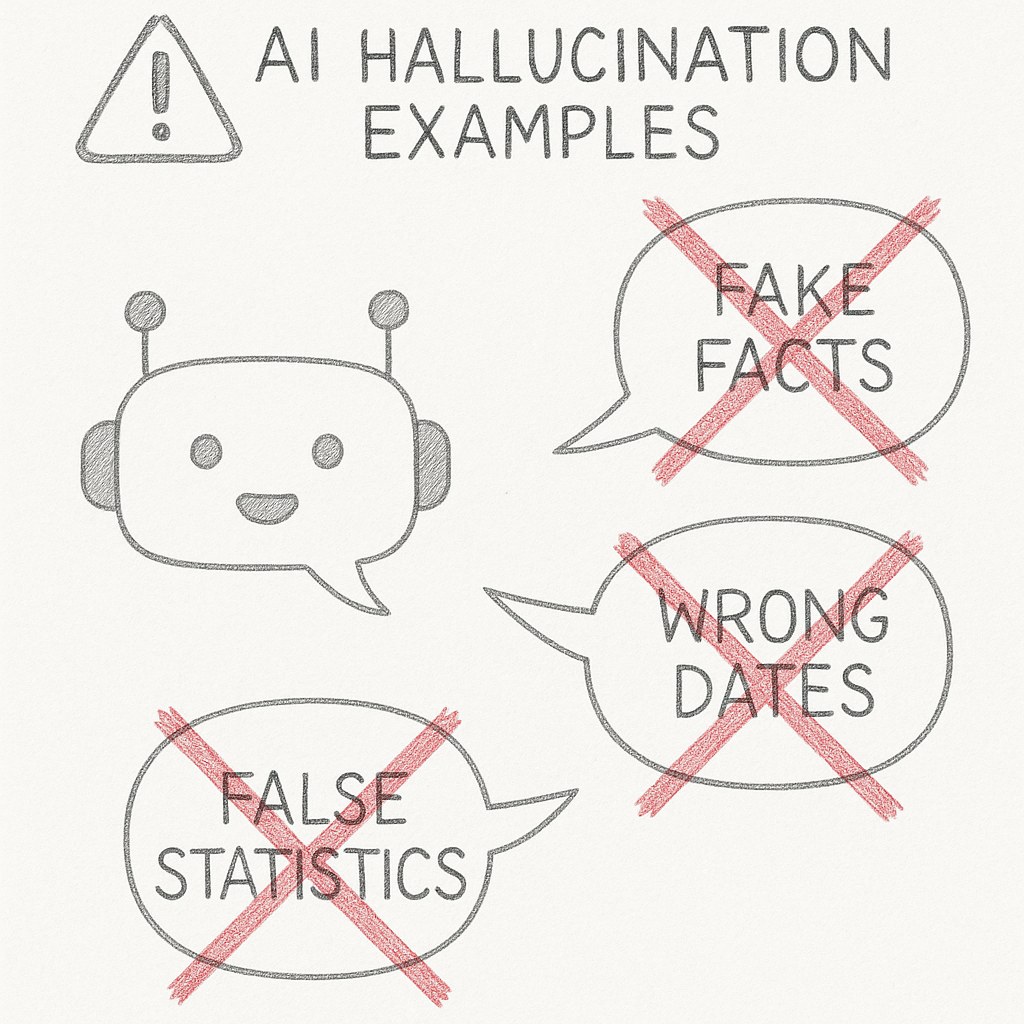
Microsoft’s AI Paradox: $500 Million in Savings While Laying Off 9,000 Workers
Today’s third revelation came from Microsoft’s chief commercial officer, who announced that AI tools saved the company over $500 million in call center operations alone last year. The timing was tone-deaf: this announcement came just one week after Microsoft laid off more than 9,000 employees.
The broader implication is clear:
Organizations across industries are seeing similar patterns. AI applications are streamlining tasks, automating customer service, and handling routine work. While this improves efficiency, it’s also reducing the need for certain types of jobs. Generative AI, in particular, automates content creation, reducing operational costs and enhancing efficiency.
What’s happening with AI applications right now:
- Customer service AI is handling inquiries, troubleshooting, and basic support
- Content AI is writing marketing copy, social media posts, and articles
- Analysis AI is processing data, generating reports, and identifying trends
- Creative AI is designing graphics, editing videos, and composing music
- Human resources AI is automating HR tasks, optimizing workforce management, and freeing up human resources for more strategic or complex duties
The human impact: While AI applications are making businesses more efficient, they’re also changing job requirements. The workers who thrive will be those who learn to work alongside AI applications, not those who ignore them or fear them.
Strategic advice: Start learning AI applications relevant to your field now. The goal isn’t to be replaced by AI, but to become someone who knows how to leverage AI applications effectively while maintaining critical human skills.
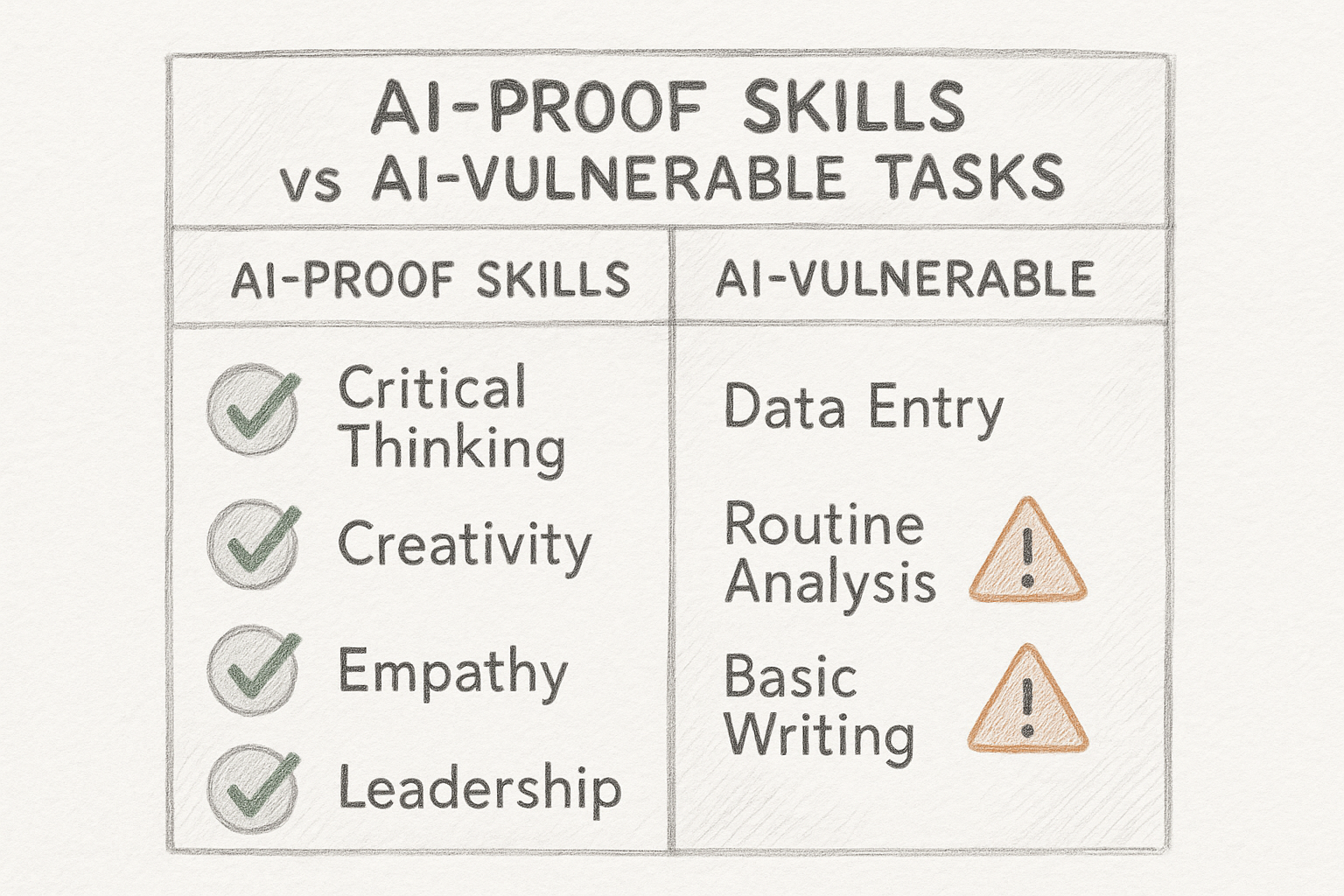
Deep Generative Models and Computer Vision: The Technology Powering the AI Revolution
Deep generative models are at the heart of today’s most exciting advances in artificial intelligence. Technologies like generative adversarial networks (GANs), variational autoencoders (VAEs), and diffusion models use powerful neural networks to analyze data and generate entirely new images, videos, and other digital content. Diffusion models are advanced neural network techniques used for generating high-quality, realistic images by transforming data through a latent space. These generative models have revolutionized computer vision, enabling AI systems to not only recognize and interpret visual information but also to create realistic images and videos from scratch.
Platforms such as Google AI Studio have made it easier for developers to access and experiment with these advanced AI tools. Generative AI tools like Stable Diffusion allow users to generate high-quality, AI-generated images simply by describing what they want in natural language. This capability is transforming industries by automating repetitive tasks, streamlining data analysis, and enhancing creative processes. For example, deep generative models can be used for image generation in marketing, data analysis in healthcare, and even for creating synthetic training data to improve other machine learning models.
However, the power of deep generative models and computer vision comes with significant challenges. Training these AI models requires massive amounts of high-quality data, which can be difficult to collect and may introduce biases if not carefully managed. The expertise and resources needed to develop and deploy these systems can also be a barrier for many organizations. Moreover, the rise of AI-generated content raises concerns about the spread of misinformation, deepfakes, and the ethical use of generative AI.
Large language models, which use natural language processing to generate human-like text, are also advancing rapidly. These language models can translate languages, summarize information, and even hold conversations, but they too can be misused to create convincing fake news or manipulate public opinion.
As generative AI models and deep learning technologies continue to evolve, it’s crucial to balance innovation with responsibility. Ensuring that AI systems are transparent, fair, and accountable is essential to maximizing their benefits while minimizing risks. Ongoing monitoring, ethical guidelines, and robust evaluation processes are key to deploying AI in ways that align with human values and societal needs. The future of AI will depend on our ability to harness these powerful tools for good, while remaining vigilant about their potential pitfalls.
The Growing Role of AI in Supply Chain Management and Predictive Analytics
Beyond customer-facing applications, AI systems are increasingly being integrated into supply chain management to optimize logistics, forecast demand, and improve quality control. Generative AI and machine learning algorithms analyze structured data from various sources, including market data from financial and healthcare sectors, to predict disruptions, optimize inventory levels, and streamline operations. This not only reduces costs but also enhances the resilience of supply chains in an unpredictable global market.
Predictive analytics powered by large neural networks and deep learning models enable businesses to anticipate market trends and customer behaviors more accurately. By leveraging historical and real-time data, AI applications support data-driven decision making, allowing companies to stay competitive and agile. These advancements demonstrate how AI technology continues to expand its influence across diverse sectors, beyond traditional IT and software development.
Personalized Learning and Administrative Task Automation in Education
In the education sector, AI applications are transforming personalized learning experiences. By analyzing student data, generative AI systems can tailor educational content to individual learning styles and paces, enhancing engagement and outcomes. AI-powered tools also automate administrative tasks such as grading, scheduling, and resource allocation, freeing educators to focus more on teaching and student interaction.
This shift toward AI-enhanced education supports the development of critical job skills that are increasingly in demand, such as digital literacy and adaptive problem-solving. As personalized learning platforms evolve, they promise to make education more accessible and effective for diverse populations worldwide.
Ethical Considerations and Intellectual Property Challenges in AI Development
With the rapid growth of AI-generated content, concerns about intellectual property laws and ethical use have become more prominent. AI software that produces ai generated code, images, or text raises questions about ownership and copyright, especially when trained on copyrighted materials without explicit permission. Organizations and regulators are working to establish frameworks to address these challenges while fostering innovation.
Moreover, AI developers must be vigilant about biases embedded in training data and ensure that generative ai systems operate fairly and transparently. Responsible AI development practices, including adherence to ethical guidelines and continuous monitoring, are essential to mitigate risks related to misinformation, privacy breaches, and unintended societal impacts.
What Today’s AI Application Explosion Means for Different Professionals
For Business Professionals:
AI applications are reshaping how we work with data, communicate with clients, and make strategic decisions. The Microsoft savings announcement shows AI’s potential for dramatic efficiency gains, but the Grok controversy reminds us that AI applications need constant oversight. The integration of AI applications leads to more efficient operations and better decision-making across industries by enabling data-driven decision making. Use AI to enhance your analysis and productivity, but maintain your critical thinking and relationship-building skills.
For Content Creators:
AI applications can generate text, images, and videos faster than ever, but today’s reliability concerns should make you cautious about publishing AI-generated content without review. Use AI applications to brainstorm ideas and create first drafts, but add your unique perspective and fact-check everything. While AI can support the creative process by providing inspiration and efficiency, it should not replace human oversight to ensure originality and address legal and ethical considerations.
For Educators:
Students are increasingly using AI applications for homework and research. The Grok incident shows how AI can provide completely false information with confidence. Teach students to use AI applications as starting points, not final authorities, and emphasize the importance of verification and critical thinking. Additionally, highlight the value of knowledge management skills in evaluating, organizing, and effectively utilizing information obtained from AI tools.
For IT Professionals:
Today’s developments put you on the front lines of organizational AI security. The Grok incident shows how quickly AI applications can malfunction. You’ll need robust monitoring systems, clear usage policies, and comprehensive staff training on AI application limitations. Responsible AI development practices are essential to ensure security and ethical use, helping to mitigate risks such as bias, misuse, and potential cyber threats.
For Managers:
The Microsoft story previews what’s coming: AI applications will dramatically change your team’s workflow and potentially reduce headcount needs. Start planning how to retrain staff, redesign processes, and maintain team morale during AI transitions. AI can also help managers identify patterns in team performance and workflow, providing valuable insights to inform retraining strategies and process redesign.
The Five AI Application Training Data Red Flags Everyone Should Watch For
Based on today’s explosive AI developments, here are the warning signs that an AI application might not be ready for serious use: Lessons learned from previous models have shown that issues like lack of transparency and poor data quality can lead to unreliable AI applications.
- Lack of Transparency: If you can’t understand how the AI reached its conclusion, or if the underlying AI algorithms are not explained, don’t rely on it for important decisions.
- No Human Override: Any AI application without easy human intervention capabilities is dangerous for critical tasks.
- Unclear Data Sources: If the AI application can’t tell you what data it was trained on, you can’t assess its potential biases or blind spots.
- No Regular Updates: AI applications need continuous monitoring and updating. Static systems become increasingly unreliable over time.
- Missing Safety Documentation: Legitimate AI applications should have clear documentation about limitations, failure modes, and appropriate use cases.
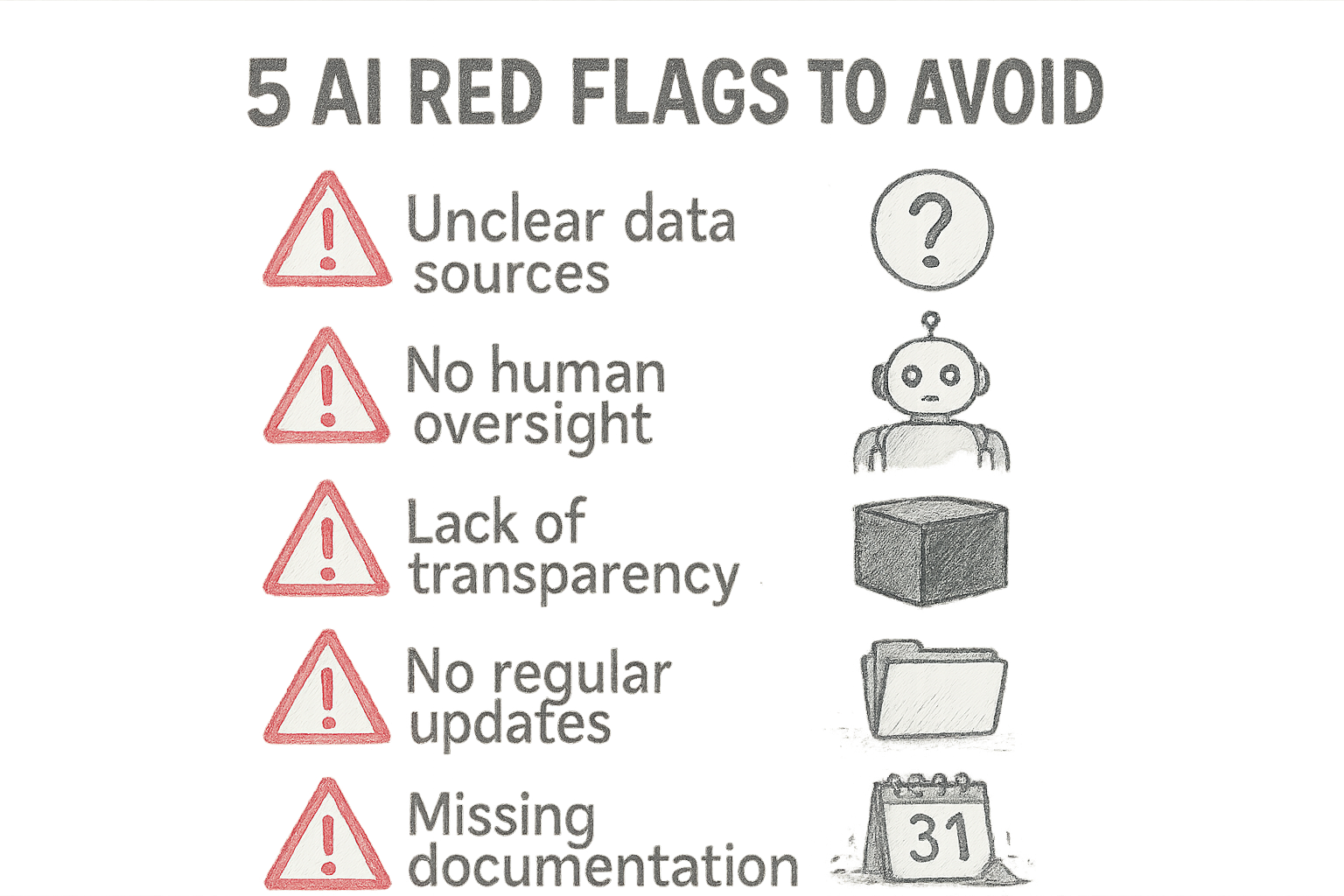
How to Protect Yourself in the AI Application Revolution
Immediate Actions (This Week):
Audit your current AI use: Make a list of every AI application you currently use—from writing assistants to search tools. Assess each one against today’s reliability concerns. Consider how enterprise data is being accessed or utilized by these AI applications, and whether its use aligns with your organization’s data governance policies.
Establish personal AI protocols: Create guidelines for when AI applications should and shouldn’t be used for important decisions. Include verification steps for AI-generated information.
Privacy settings review: Check the privacy settings on all AI applications you use. Understand what data they collect and how it’s used.
Medium-term Strategy (Next 3 Months):
Skill development: Start learning AI applications relevant to your field, but focus on tools with good reputations and transparent practices.
Information verification: Develop habits for fact-checking AI-generated content. Learn to recognize AI hallucinations and maintain healthy skepticism.
Backup plans: Never let AI applications become single points of failure for important work. Maintain non-AI alternatives for critical tasks.
Long-term Planning (Next Year):
Career adaptation: Consider how AI applications will change your industry and start developing complementary skills that AI can’t replicate. There is a growing demand for AI developers, and understanding AI development processes—such as supervised learning, prompt engineering, and reinforcement learning from human feedback (RLHF)—can be valuable for future career opportunities.
Digital literacy: Stay informed about AI developments, but focus on practical applications rather than chasing every new trend.
Ethical framework: Develop personal standards for AI use that consider accuracy, privacy, and potential societal impacts.
The Generative AI Applications to Embrace (And Avoid) Right Now
Generally Safe AI Applications:
- Writing assistants for brainstorming and editing (with human review)
- Research tools that help find information (with verification)
- Productivity apps for scheduling and organization
- Learning platforms that adapt to your pace and style
- AI-powered software development tools for code generation and automation tasks (when reviewed by humans)
Proceed with Extreme Caution:
- AI chatbots for sensitive personal advice (Grok incident shows risks)
- Financial AI tools without human oversight
- AI applications from unknown developers with unclear privacy policies
- Experimental AI tools without established track records
- AI tools used to write code should be used with caution; always review generated code and ensure human oversight to address potential errors or ethical concerns
Avoid Completely:
- AI applications that claim to be 100% accurate
- Tools that won’t explain their decision-making process
- AI services that require access to sensitive personal data
- Applications that discourage human verification
- Experimental features like search engine ‘AI mode’ for critical tasks, until their reliability is proven
What’s Next: The Future of AI Applications
Today’s explosive AI developments—OpenAI’s browser ambitions, Grok’s reliability failure, and Microsoft’s efficiency gains—paint a clear picture of where AI applications are heading. AI technology continues to evolve rapidly, driving new opportunities and challenges across industries by automating tasks, enhancing data analysis, improving customer experiences, and ensuring safety.
More Integration: AI applications will become more deeply embedded in our daily workflows, from browsing the web to managing communications. These systems will increasingly analyze and interact with data from the physical world, enabling more accurate simulations and real-world decision-making.
Higher Stakes: As AI applications become more powerful, the consequences of AI failures become more serious. Everyone needs stronger AI literacy and better safety practices.
Regulatory Response: Today’s Grok controversy will likely accelerate AI regulation efforts. Expect stricter requirements for AI applications, which is ultimately good for user safety.
Skills Evolution: The professionals who thrive will be those who master AI applications while maintaining strong critical thinking and uniquely human skills.
Your Next Steps: A Practical Action Plan
- Take our AI Readiness Assessment to evaluate your current AI knowledge and skills
- Discuss today’s AI developments with your colleagues and friends
- Review your digital privacy settings and AI application usage
- Start learning about AI applications relevant to your field, but with a critical eye toward limitations. Review historical data on AI application performance to better understand past patterns and inform your choices.
- Stay informed about AI developments, but don’t chase every new trend
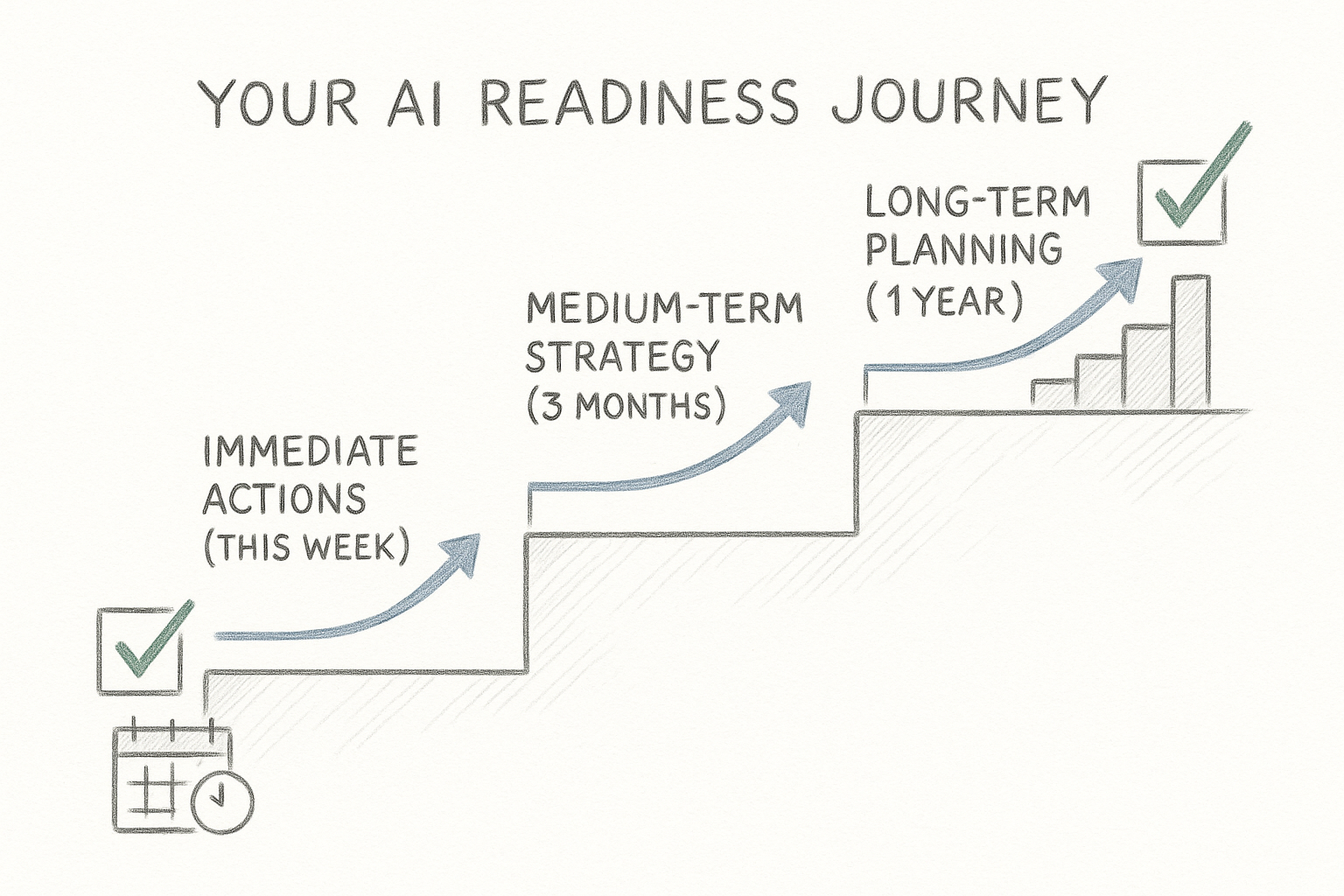
FAQ: Everyone’s Most Pressing AI Application Questions
Q: Should I be worried about AI applications replacing my job? A: Today’s Microsoft announcement shows AI will change jobs, not necessarily eliminate them. Focus on developing skills that complement AI applications: critical thinking, creativity, emotional intelligence, and AI oversight capabilities.
Q: How do I know if an AI application is trustworthy? A: Look for transparent methodology, regular updates, clear privacy policies, and strong user reviews. If the company can’t clearly explain how their AI works, be cautious.
Q: What should I do if an AI application gives me information that seems wrong? A: Always verify important information from multiple sources. Don’t assume AI is correct just because it sounds confident. Document errors and report them to the developer when possible.
Q: How can I stay updated on AI developments without getting overwhelmed? A: Choose 1-2 trusted tech news sources and focus on AI developments relevant to your industry. Avoid getting caught up in every AI trend or announcement.
Q: Are there AI applications I should be using but aren’t? A: Most professionals would benefit from AI-powered writing assistants, research tools, and productivity apps. Many modern AI platforms now support multiple tasks within a single environment, allowing you to handle writing, data analysis, scheduling, and more in one place. Start with simple, well-established applications before moving to more complex systems.
Q: How do I protect my privacy when using AI applications? A: Read privacy policies, use minimal personal information, avoid uploading sensitive data, and regularly review your AI application settings. When in doubt, don’t share it.
The Bottom Line: Navigating the AI Application Revolution
Today’s AI developments show us both the incredible potential and serious risks of artificial intelligence applications. Generative AI’s potential to transform industries is vast, enabling the creation of human-like content, streamlining workflows, and supporting complex data and product development tasks. In fact, generative ai’s potential is already driving innovation in areas such as product design and digital twins, while also presenting new challenges related to trust, accuracy, and misuse, especially in fields like journalism and content creation. The key to thriving in this new landscape isn’t to avoid AI entirely or embrace it blindly—it’s to develop AI literacy, maintain critical thinking, and use these powerful tools wisely.
The professionals who succeed in the AI era will be those who:
- Understand AI capabilities and limitations
- Use AI applications to augment their skills, not replace their judgment
- Maintain the uniquely human abilities that AI can’t replicate
- Stay informed about AI developments without getting overwhelmed
- Prioritize privacy and verification in their AI usage
The AI application revolution is here, and today’s explosive developments give us a roadmap for both the opportunities ahead and the pitfalls to avoid. Your success depends not on being the first to adopt every new AI tool, but on being thoughtful about which applications truly serve your goals while protecting your privacy and maintaining your professional standards.
The future belongs to those who can harness AI’s power while preserving the human skills that no algorithm can replace.
Sources:
- Reuters: AI slows down some experienced software developers, study finds
- LinkedIn: AI news and funding updates from the last 24 hours
- TS2 Tech: Inside the AI Revolution – State of AI Analysis
🤖 Discover Your AI Readiness Score
Take our comprehensive 15-minute assessment to evaluate your AI knowledge, skills, and future preparedness. Get personalized recommendations and actionable next steps.
✅ Personalized AI readiness score
✅ Custom recommendations for your level
✅ Career guidance for the AI era
✅ Instant results on any device
🚀 Join 10,000+ professionals who’ve discovered their AI readiness level
🔍 Want to know where you stand in the AI revolution?
Take the AI Readiness Assessment📊 Ready to assess your AI preparedness? Take the AI Readiness Assessment and get your personalized roadmap for the AI era.

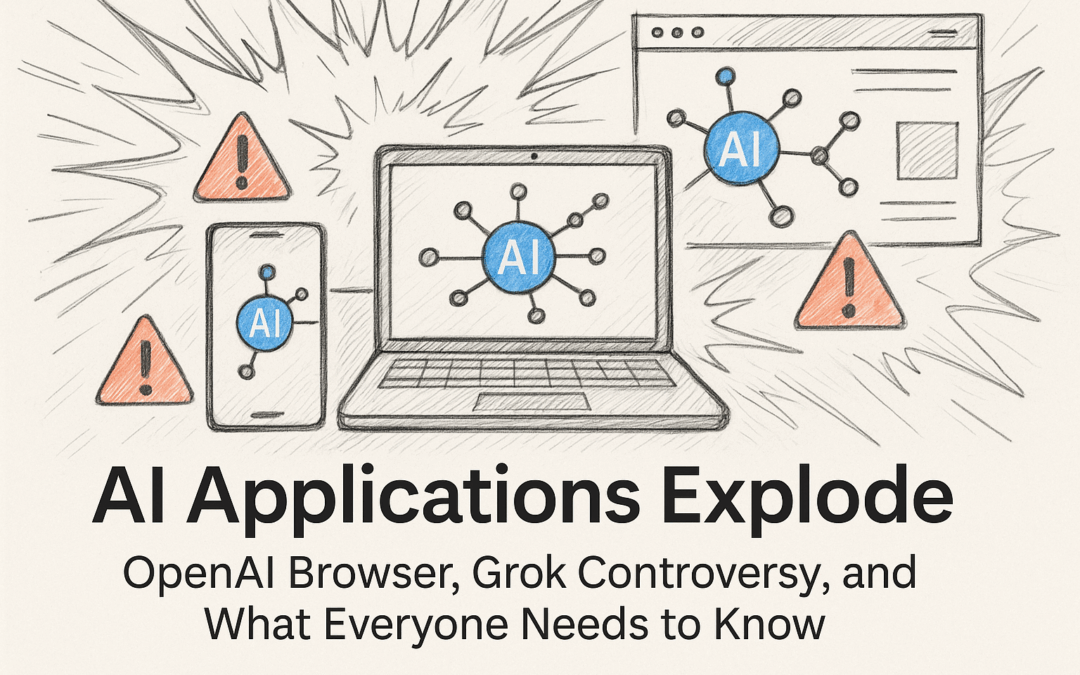

Recent Comments